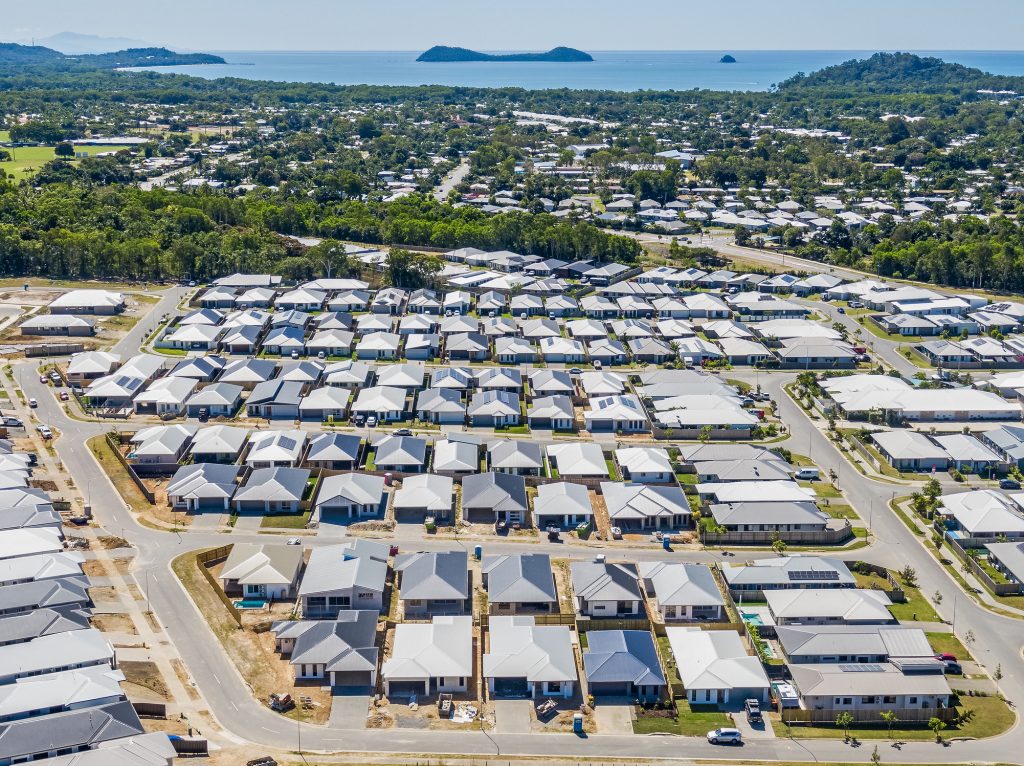
In 2022, demographers demonstrated that parts of the north of Australia are among the most remote and sparsely populated areas in the world. These characteristics are fundamental barriers to economic transformation and growth in the region. They inhibit improved wealth, health and social equality for the region’s subpopulations—most notably First Nations residents.
But does the small size of northern cities and communities and their distribution over vast land areas matter for national security?
Certainly, there are still echoes of the post–World War II policy of ‘populate or perish’ in the north, including in recent commentary linking population and strategic defence. If size does matter, recent population trends in the north would worry the ‘big is best’ camp. Since the end of the national mining boom in around 2013, for example, the number of people living in the north has at best stagnated and in many areas decreased. Even the largest cities of Townsville, Cairns and Darwin, while continuing to grow, are doing so at lower and less consistent rates than many parts of southern Australia.
In 2015, the Australian government detailed an ambitious policy for developing the north for the period 2015–2060 in a white paper titled Our north, our future. Despite the region’s increased strategic importance, defence wasn’t listed as one of the five industries with ‘bright growth prospects’. In any event, the plan provided no clear direction as to how its ambitious target to quadruple the population of the north would be achieved.
Despite this, defence remains an important industry in the north, employing around 7% of the workforce along with contributing to population size.
There’s a touch of irony, though, about a strategic concern for population sparsity in the north, since that same sparsity has enabled Australia to use the region’s ‘vast and empty’ spaces for training exercises and military infrastructure. These characteristics have also been the foundations on which Australia has built collaboration and strategic partnerships with other nations. The north’s strategic geography has been an important enabler for the US government’s pivot towards a strategic deterrence posture in the Indo-Pacific, a stance far removed from the less benign atmosphere of decades past.
One of the important effects of a larger population in the north would be enhanced infrastructure, such as roads, airports and housing. These may both help support further defence efforts and be critical to transporting an Australian defence response and its equipment to the north in a range of potential deterrence and emergency scenarios.
However, almost all recent past and projected population growth in the north has been for its cities, which already have airports capable of handling large military aircraft. And without significant pre-existing quantities of troops in the north, it’s likely that bringing forces from the south will take significant time. Depending on the time of year, this effort may also be hampered by weather conditions, which can be so extreme in the north that they can force the closure of major highways and rail lines.
Along with these issues, there are national demographic trends of direct relevance for Australia’s military. Population ageing, for example, will mean a lower proportion of Australians in the workforce, which will challenge defence recruitment efforts. Ageing is now prominent in northern Australia as well. While other sectors can more readily use skilled migrants to offset the impacts of an ageing workforce, most defence recruitment can’t feasibly come from new migrants.
Consequently, and although there’s currently a recognisable presence of defence troops and infrastructure across the north, ongoing difficulties in population attraction and retention for the north mean that, should defence experts believe a large troop presence is in our national interest, the Australian government must enact a deliberate and very large expenditure program to plant more defence personnel and infrastructure in the north. This could be in the form of additional personnel, a relocation of existing personnel, or a combination of the two. All these options will be very expensive for the nation, but without them the population of the north is unlikely to take off under its own steam, especially in the near future.
If a larger concentration of Australians in the north is considered of strategic importance, another policy option is providing significant incentives for the civilian population to live there. Policies with real bite would be required, since tax and other minor incentives of the past have largely not improved attraction and retention. These might include migration directives that some visa holders must live in and stay in the north. Certainly, migrant numbers from a range of nations such as the Philippines, Nepal and India are already growing in the north.
Finally, to me as a demographer and not a strategic defence expert, it seems somewhat fanciful to be discussing how population size might matter in the unthinkable scenario of conflict, since that is likely to involve the kind of strategic strikes we all hope are never launched in anger by any country again. In a hot conflict, the population size in northern Australia will have little relevance to the overall outcomes. This further highlights the importance of defence as deterrence, and of policies that nurture socially and economically prosperous communities in the north. It is these same prosperous communities that will promote the development of resilient critical infrastructure that will signal Australia’s ability to meet any future challenges in the north.

